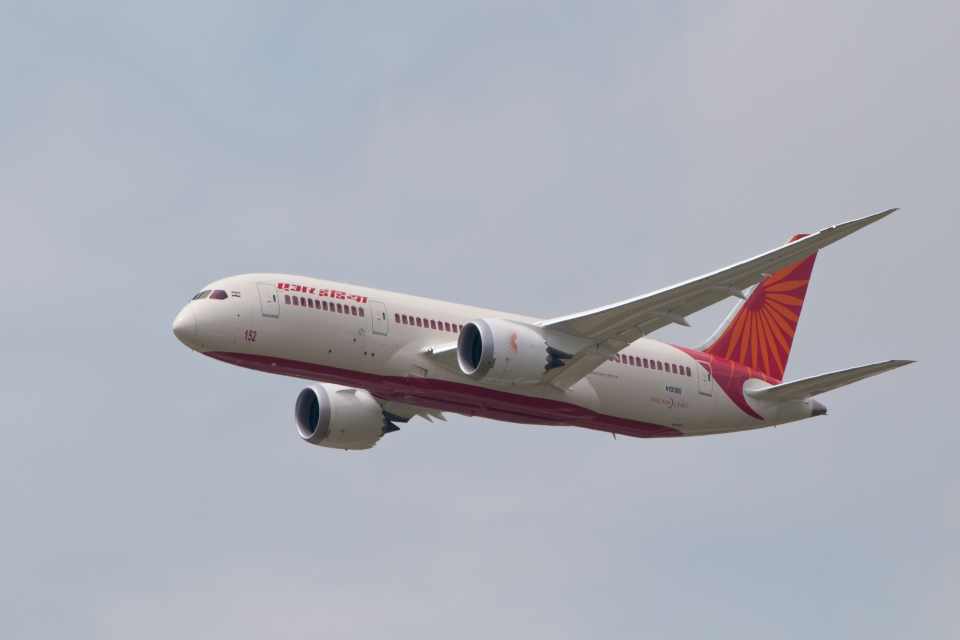Aviation
Government seeks bids to sell 76% stake in Air India

Government seeks bids to sell 76% stake in Air India
NEW DELHI: According to Times India Statement : Sixty-five years after Tata Group-founded Air India (AI) was nationalised, the government on Wednesday offered to sell 76% stake in AI to private bidders and effectively exit the airline business. Of AI’s total debt of Rs 50,000 crore, bidders for airline arm — AI, AI Express and AI-SATS (airport service company) — will have to take over debt of Rs 24,576 crore and liabilities of Rs 8,816 crore. The airline arm is being offered for sale first. TOI had first reported on March 6 that divestment of AI will begin with the airline arm being hived off first.
The iconic Nariman Point headquarters will not be associated with the “new AI” and only the central Delhi HQ at Airlines House will be given to the successful bidder to use for “two years or more”, while the ownership will remain with the government. Among “core real estate”, the bidder will get 21.8 acres hangar space at Delhi and Mumbai airports, said senior officials.
According to the preliminary information memorandum (PIM) issued on Wednesday, bidders need to have a minimum net worth of Rs 5,000 crore. Indian carriers with negative net worth, including all except IndiGo, will be considered to have zero net worth and can bid for the Maharaja, if they tie up with someone that can take the combined net worth to the required amount. This paves the way for an Indian carrier to tie up with a strong international player. Tata Sons-Singapore Airlines, IndiGo and an unidentified foreign player have already expressed interest in AI. Jet Airways was also waiting for the bid documents to decide on its next move and Qatar Airways wants to start an airline in India. They may also join the fray.
The successful bidder, expected to be finalised by September-end, will have to retain AI brand name for a specific period, which will be spelt out in the request for proposal. But a condition that AI has to be run on an “arm’s length basis” for at least three years, when it cannot be merged with any other entity and would need to maintain its identity as a separate airline, effectively means that the brand will have to be retained for at least that long.
The employees will need to be retained for at least a year. The government will carve out Esops from the 24% equity it will keep. Employees have also been allowed to participate in the bidding process, either directly or by creating a consortium.

Aviation
Boeing, Antonov to Collaborate on Defense Projects

– MOU represents Boeing’s commitment to work with Ukrainian industry
– Includes exploring opportunities for collaborating on in-country support of Unmanned Aerial Systems
A Memorandum of Understanding was signed today by Boeing and Antonov Company to investigate potential collaboration on defense-related projects.
“We’re happy to keep collaborating with the Antonov Company to help Ukraine’s economic development and expansion,” stated Ted Colbert, CEO and president of Boeing Defence, Space, & Security.
Airbus and the Antonov An-225: The Best Partnership:Click here
“This agreement demonstrates our ongoing efforts to find more opportunities to work with Ukrainian industry, which was underscored by our signing of the Ukrainian Defence Industry Compact earlier this year.”
The areas of potential collaboration identified in the agreement consist of training, logistical support and overhaul services for tactical Unmanned Aerial Systems utilized by the Ukrainian Armed Forces, which includes the ScanEagle. In addition, the companies will also explore opportunities for Antonov to provide engineering support to Boeing.
The six largest cargo aircraft ever built in the aviation industry:Click here
“A strong, innovative, and efficient defense industry is key to sustainable economic development and national security, and we are extremely excited to collaborate with Boeing,” said Ievhen Gavrylov, CEO of Antonov Company.
This agreement brings a whole new level of opportunity to implement the latest and most effective solutions – in addition to the possibility of future projects with Boeing in the aerospace and defense industry.”
-

 Travel1 week ago
Travel1 week agoAir India to Expand US Operations with Three New Routes After a Decade
-

 Travel2 weeks ago
Travel2 weeks agoWhy We Should Avoid These Stamps in a Passport
-

 Airlines1 month ago
Airlines1 month agoInvestigations Reveal Fake Chinese Titanium in Boeing and Airbus Jets
-

 Tech4 weeks ago
Tech4 weeks agoChina’s CATL Plans 1,800-Mile Electric Plane Launch by 2027
-

 Airport3 days ago
Airport3 days agoTop 10 Largest Airports in the World by Size
-

 Aerospace4 weeks ago
Aerospace4 weeks agoChina’s Fighter Jets Turn Wings into Autonomous Drones
-

 Airlines4 days ago
Airlines4 days agoAir India Rolls Out A350s for Delhi-New York JFK and Newark Routes
-

 Defence3 weeks ago
Defence3 weeks agoBoeing Enhances Chinook with New Engines and Block II Upgrades at $96 Million







